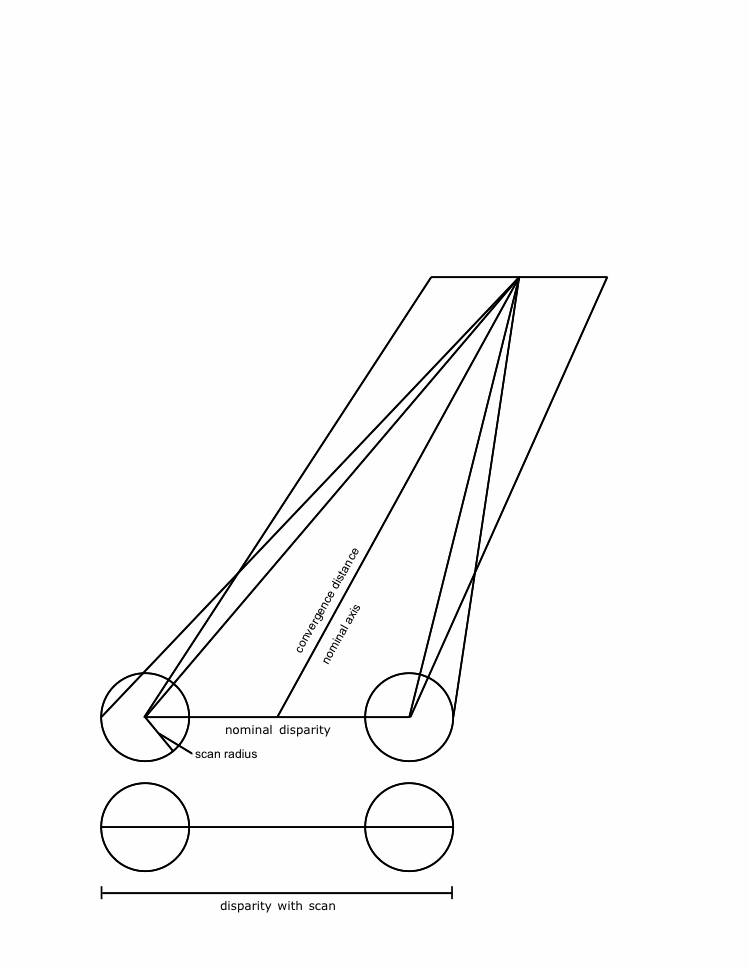v3D Stereoscopic
Strikingly more realistic 3D perception than traditional stereoscopic imaging
Chris Mayhew explains the v3D stereoscopic parallax scanning process
About v3D
Our stereoscopic 3D technology, v3D™, creates a strikingly more realistic 3D perception than traditional stereoscopic imaging. This is accomplished using two synchronized parallax scanning lenses that capture additional non-horizontal three dimensional information that is not present in traditional stereoscopic. Unlike standard 3D lens systems, which can capture images from two points of view that differ only in disparity and convergence, parallax scanning adds a point of view that mimics the natural movements of the human eye.
Since the onset of film, conventional lenses have used a static iris to capture visual information. While this process is effective at capturing an image, it fails to collect the detailed information that one would perceive when viewing something in person.
This shortcoming can be explained by the fact that a traditional lens iris does not scan, unlike the human eye, which is in a constant state of motion. Standard lenses thereby fail to provide means to capture the additional visual cues that we perceive in everyday life. v3D corrects for this problem by capturing additional parallax information that is similar to that from head motion and the scanning motion of one’s eyes. The parallax information provided by a moving iris allows for a more natural, unified, three dimensional perception on the part of the viewer.
DPs and Stereographers can use v3D to create more compelling content than traditional 3D can offer without requiring changes in the 3D production cycle. The result is a dramatically improved viewing experience and an invaluable perceptual tool for creative directors and producers alike. In addition to producing a superior 3D experience, a single channel (left or right) of a v3D production can be released as a depth enhanced v3 imagery that will play on standard 2D unaided displays.
v3D has been reviewed by industry experts who praised its simplicity and effectiveness across the board
v3D Attributes

Increases the three dimensional information in a stereoscopic image

Highly effective with smaller inter-ocular distances, increasing the amount of 3D dimensionality and shape

Helps address and alleviate planar/cutout syndrome, adding vivid realism to background imagery


Creates a unified 3D perception

Displays parallax scanned 3D imagery in a non-fatiguing manner

Produces a single 2D channel with enhanced depth and texture, viewable on regular displays
